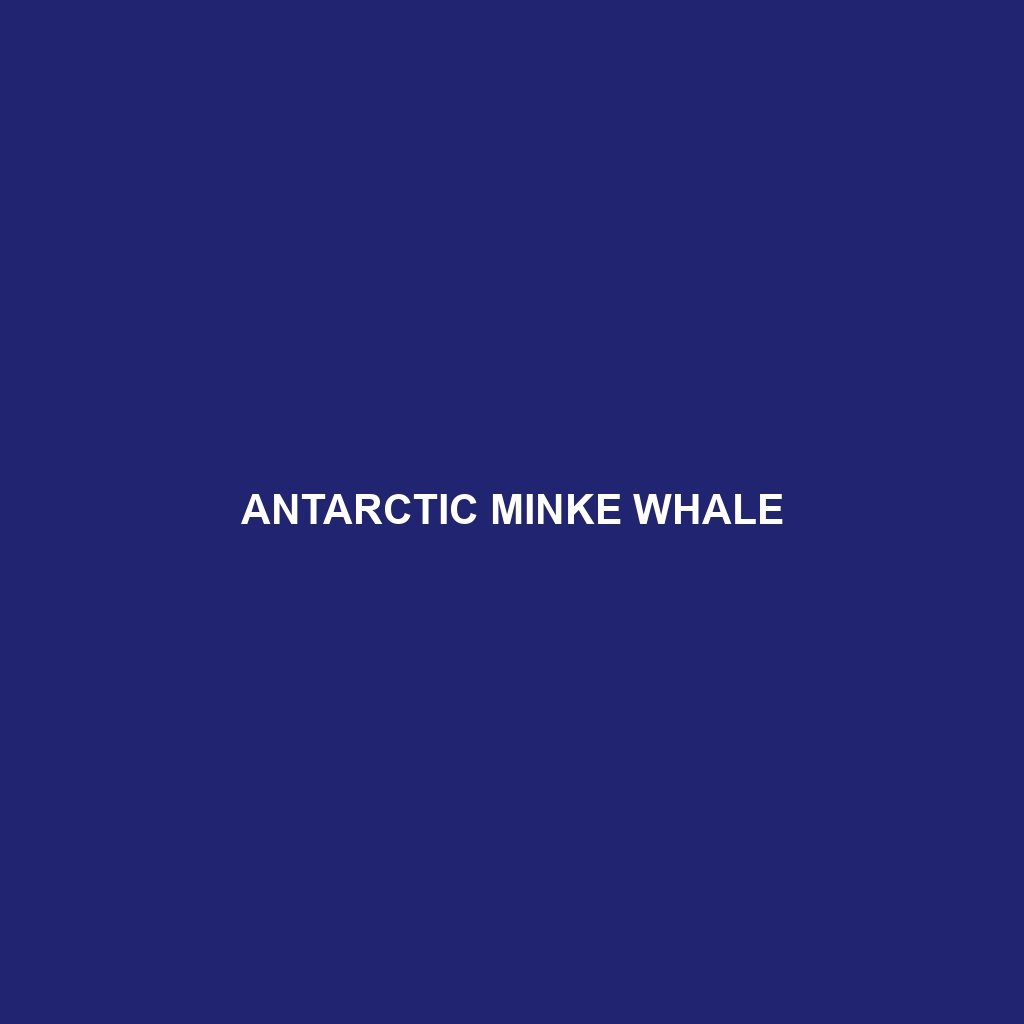Common Minke Whale Description
Common Name: Common Minke Whale
Scientific Name: Balaenoptera acutorostrata
Habitat
The Common Minke Whale is primarily found in temperate and polar waters around the world. These whales inhabit the North Atlantic and Southern Oceans, often frequenting continental shelf waters. They can be seen in various marine environments, including bays, coastal areas, and sometimes even in river mouths, showcasing their adaptability to different habitats.
Physical Characteristics
The Common Minke Whale is one of the smallest baleen whales, reaching lengths of up to 30 feet (9 meters) and weighing around 10 tons. They possess a streamlined body that is dark gray to bluish in color with a lighter underbelly, featuring a distinctive white band on each flipper. Their pointed snout and dorsal fin, located toward the middle of their back, make them easily identifiable. The sleek shape and agile movements are fascinating characteristics of this species.
Behavior
Common Minke Whales exhibit a variety of behaviors that can pique the interest of whale watchers and researchers alike. They are known for their solitary or small group behaviors, often surfacing alone or in pairs. Their acrobatics and breaching behavior can be quite spectacular. Notably, they are not as sociable as other baleen whales but are known to be curious and may approach boats, making them a favorite among wildlife observers.
Diet
These whales primarily feed on small fish and zooplankton, including krill and copepods, making them important predators in their aquatic ecosystems. Their unique feeding strategy involves lunging at large schools of prey while filtering food through their baleen plates. Common Minke Whales are known to consume approximately 2 to 3 tons of food each day during feeding seasons, demonstrating their role in maintaining marine balance.
Reproduction
The reproductive habits of the Common Minke Whale are intriguing. Breeding typically occurs in the spring and summer months, with a gestation period of around 10 months. Females usually give birth to one calf that is approximately 8 to 10 feet (2.4 to 3 meters) long at birth. Maternal care is crucial, as calves are nursed for about 6 to 8 months before becoming independent, learning vital survival skills during this period.
Conservation Status
As of the latest assessments, the Common Minke Whale is classified as Least Concern by the International Union for Conservation of Nature (IUCN). However, certain populations may experience threats from whaling, habitat loss, and climate change. Continuous monitoring and conservation efforts are essential to ensure their populations remain stable and to address the pressing threats they face.
Interesting Facts
Did you know that the Common Minke Whale is one of the fastest whale species, capable of reaching speeds of up to 20 miles per hour (32 km/h)? Additionally, they are quite vocal, using a series of low-frequency sounds to communicate with one another over long distances. These characteristics contribute to their adaptability and successful life in dynamic marine environments.
Role in Ecosystem
The Common Minke Whale plays a vital role in its ecosystem as a key predator of small fish and zooplankton. By regulating prey populations, they help maintain the balance of marine ecosystems. Furthermore, their carcasses serve as a food source for various scavengers, enriching the seabed and promoting biodiversity within their habitats.
This HTML format provides a comprehensive species description for the Common Minke Whale, utilizing relevant keywords for SEO optimization and ensuring clarity and accessibility for all readers.
